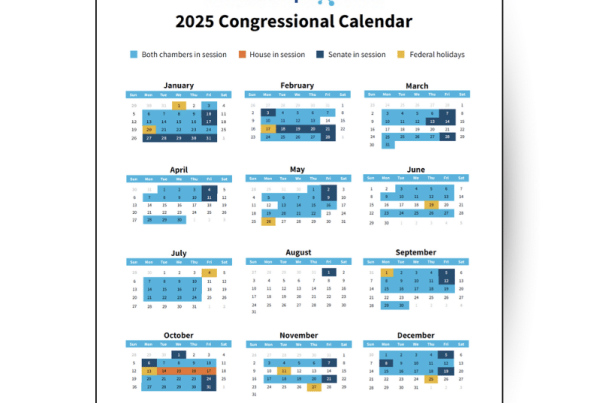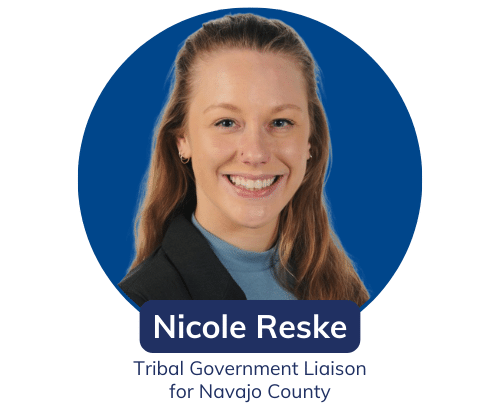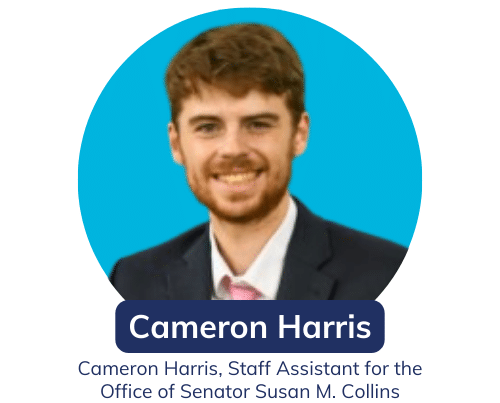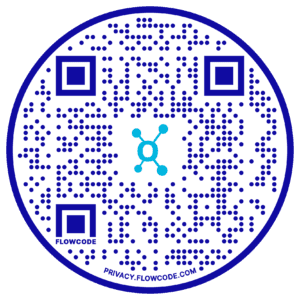I had the privilege of speaking with Wayne Walsh about his career path, passion for innovation, and the importance of communication and continued learning.
Takeaways:
- Passion for innovation: Wayne emphasizes the importance of policy, process and collaboration in driving innovation.
- The Key to Success: Resilience, continuous learning, and effective communication are the most important trains for success in and out of the innovation space.
- Diverse Career Paths: Wayne’s wide-ranging experiences have uniquely equipped him to navigate each role with greater efficiency, drawing on skills and knowledge gained across various industries.

Can you tell me about your career path and how it has led you to where you are now?
It began with joining the Marine Corps in 1994, where I served on active duty until 2002. For the first four years, I was a Hawk Missile Systems operator. Following the Department of Defense phase-out of the system in 1997, I transitioned to a more managerial role with the Marine Corps Community Services (MCCS), working alongside civilian personnel to provide vital services across various bases.
In 2002 I transitioned to a civilian role, where I was picked up by an international UK-based company expanding into the United States and became the sole regional operational review manager for the US. It was a great opportunity – but unfortunately, the board of directors withdrew from US operations after four years. This gave me the chance to follow a passion and open my own small business – a retail surf and skate shop in Atlanta. As a former surfer and skater, it was important to create the same path forward I was provided, be a good mentor, and lead in a positive way.
After the 2008 economic downturn, I closed the business and relocated to Colorado, where I began working for a city municipality. This progressed, moving me into the city manager’s office working across local, county, and state organizations managing public information, from emergency management to the web applications, coordinating directly with IT resource allocation and requirements. Colorado is also where I joined the Army National Guard and became a warrant officer, a phenomenal opportunity to grow in a leadership role creating positive change.
Throughout my career, dating back to 1994, I was immersed in IT. This expertise propelled me into the city manager’s office, where I bridged the gap between technical and non-technical teams. Helping to streamline policy requirements, projects, and IT operations. This led to an opportunity to aid in establishing the southwest’s first four-state Army National Guard Cyber Protection Team in Denver. From there, I secured a position supporting HPE’s Navy Marine Corps Internet (NMCI) migrations, broadening my experience integrating joint military IT services. Subsequently leading to my selection as an implementation manager for Defense Information Systems Agency (DISA), working on the global deployment of the Joint Regional Security Stack (JRSS). After many years of increasing experience, I was selected to a federal civilian position at Fort Meade, focusing on aligning new IT services and processes to drive innovation and establish consistent baselines for the military departments and agencies.
My most recent efforts include implementing DISA’s Thunderdome Zero Trust Network Access (ZTNA) solution at the Pentagon, US Coast Guard, SOUTHCOM, and other DISA supported agencies as we bring the latest cybersecurity framework to fruition. Working across organizations at DISA headquarters today in a broader role, I now pursue empowering DoD leaders in what is possible in the realm of IT/cyber products and service solutions, delivering business case and impact analysis to strategic alignment and cybersecurity requirements.
What aspects of the department’s push towards innovation are you most passionate about?
I am a passionate advocate for innovation, particularly in the realm of technology. My drive has always been rooted in a deep belief in what is possible with technology. The role of emerging technologies is critical to ensuring the United States remains a leader in innovation, which I see as fundamental to our continued success both now and in the future.
Stimulating that passion, is the privilege to attend the National Defense University’s (NDU) College of Information and Cybersecurity (CIC) in pursuit of a master’s degree and enabling the continued research to what’s possible. Discussions in these classes have focused on what drives policy from top down. Taking the time to learn more about these topics and educating myself has enabled me to get a more holistic view of the bigger picture.
I find that innovation has been a driver for the United States of America, especially today as it relates to cybersecurity and the current Great Power Competition. I believe the Department of Defense plays an intricate role in the implementation of this success. Researching existing and new policies, considering how that translates to actionable standards and processes, enabling the ability to drive new forward-thinking solutions. I find we have reached a point where individual contributions are critical, and the greatest risk is human error. This is equally true in the context of innovation. I thrive in that middle between technical and non-technical leadership, helping teams refine processes and implement solutions from start to finish. No matter where I work or what I focus on, this is the value I bring: driving processes forward to achieve successful integration.
For me, when I think about driving innovation, I think of the position of a scrum master. A scrum master’s job isn’t doing the expert’s work but removing obstacles to make them even more successful. That is where I operate best – identifying and removing roadblocks, lifting and enabling teams to move forward, ensuring we continue to innovate and progress.
What do you believe sets the innovation space apart as a unique work environment, and how do you navigate its challenges in your everyday work?
What sets the innovation space apart as a unique work environment is its dynamic nature and the consistency to stay ahead of the curve. As a former small business owner, I understand the importance of passion in problem-solving and the value of diverse ideas. In the innovation space, it’s crucial not to rely solely on large organizations to drive advancement. While the big players have a seat at the table, we need to ensure our small businesses and individuals contribute their perspective, leading to more creative and effective solutions.
I approach innovation by focusing on collaboration and inclusivity. I believe it’s not just the head of the table that needs the most attention, it’s ensuring we work across the entire staff. Even the smallest idea can lead to the biggest result. It’s important to take the time, do the research, and gain knowledge on how this solution can be implemented and where it fits.
So, for me, it’s a mindset to keep innovation at the forefront. It is important to tap into a broad range of resources like conferences and industry like AFCEA, Billington, Potomac Officers Club, and Gartner. These networks help ensure we’re exploring every possible angle and staying as close to the forefront of technology and policy solutions for the DoD and the warfighter. As once a former private myself, I think it’s okay if the leadership gets the credit but it’s most amazing when the warfighter benefits from it.
Describe a challenging or rewarding project that significantly influenced your growth as a professional. How did you handle the challenge, and what did you learn from the experience?
I must look to the team at DISA’s JRSS Program Management Office (PMO), I believe they took a calculated risk back in 2017 taking on a fresh warrant officer on the other side of the country, bringing me in, and planting me right in the middle of an active program and saying, “help us create success”.
With the JRSS PMO, they were already up, running and expanding. This portfolio was a broad scope of interaction with nearly every military service and agency. The challenges that existed spanned from asset management to engineering, when you approached a customer or military leader you needed to ensure that you were speaking their language and meeting their needs, otherwise there is time lost trying to attain a common understanding. I really had to learn and understand the “why” – why does this solution matter to them and how does it fit into their mission? JRSS opened my eyes to an innumerable list of shifting requirements within a single program. It exists across a truly joint environment and to find how it all worked with different military departments and agencies was a challenge. Obtaining success was illusive, not only was the organization pursuing it but also that customer that needed a 24x7x365 solution. That was the challenge, success and failure, opportunity and obstacles, all wrapped in one. I can honestly say that it was all a blessing to learn from each one of the staff in that office over the years.
What has made you successful in your role and what advice would you give to individuals who aspire to work in the innovation space?
I don’t know that my success is solely with me – there are a lot of leaders that saw potential in me and that enabled my success. When I reflect on what has made me successful, I believe three key traits stand out: resilience, willingness (to keep learning), and communication. I was always open to doing research, working to gain understanding, and possess the necessary knowledge so I can be that resource for those around me. But above all, communication has been the most critical factor. My ability to communicate effectively – not just with leadership, but across different teams and divisions – breaking the silos – has enabled the requisite cross-functional collaboration, a key principle in information systems management and innovation.
Building on that, if someone wants to be successful in this space, I will offer similar advice. Communication is essential. It’s not just about having the right ideas but being able to share them and foster collaboration between different stakeholders. It is easy to keep it to yourself, but the willingness to give it away for organizational and team success is strength. Consider taking time to teach yourself and better understand both the current landscape and the emerging needs so that you can act as a connector and a resource for your organization.
When you asked this question I thought of Bill Gates – how did he go from this guy in a garage to the man he is today? It might not be everyone’s favorite example, but for me it is a great example of how important communication and collaboration is in innovation. He didn’t create success alone; he had to communicate his vision, work with different people and organizations, and build the right partnerships to bring his idea to life. That’s where I think innovation lives – not just in implementation or creation but establishing the requisite communication over the vast spectrum of noise to get to that right customer and the right understanding to create success.
Word Association, what is the first word that comes to mind for each of these?
- Emerging Tech – The Unknown
- Small Businesses – Opportunity
- Artificial Intelligence – Feasibility
- Policy – Foundation
- Networking – Required






